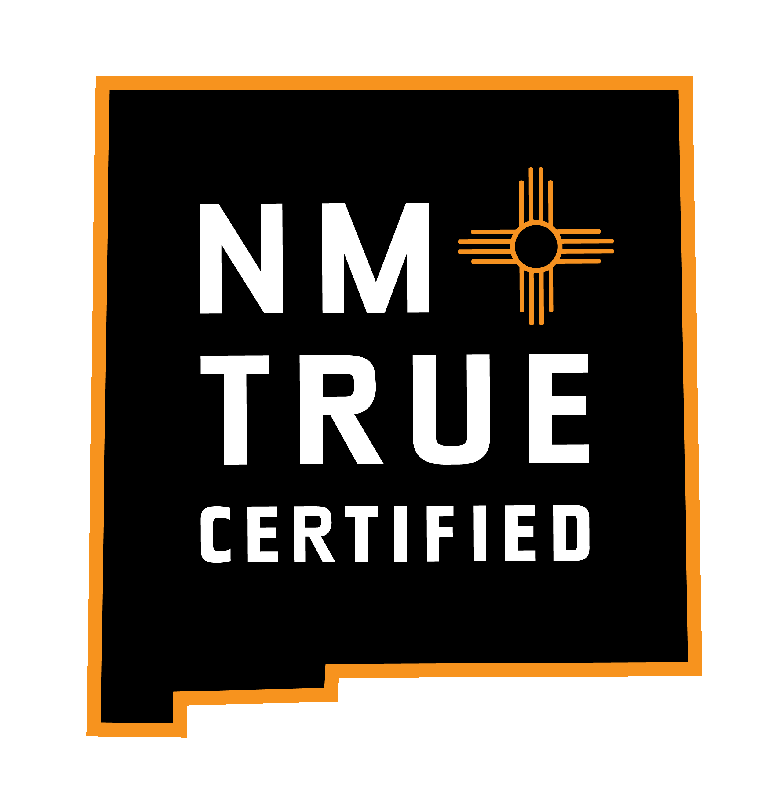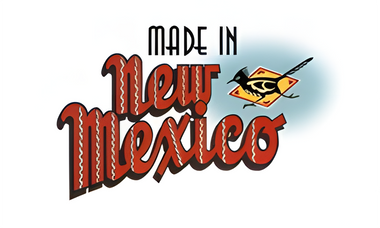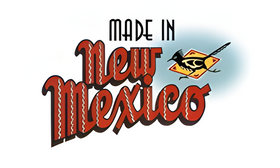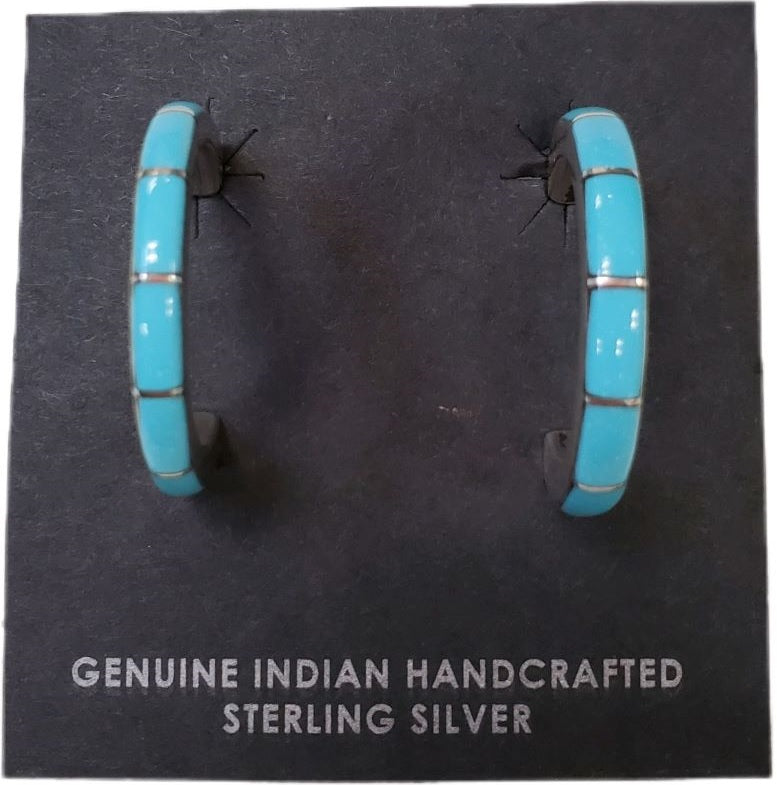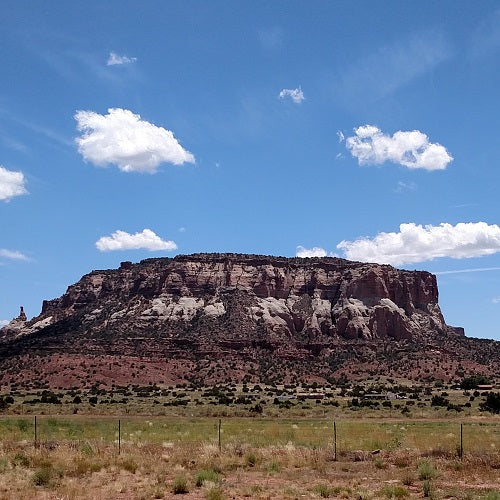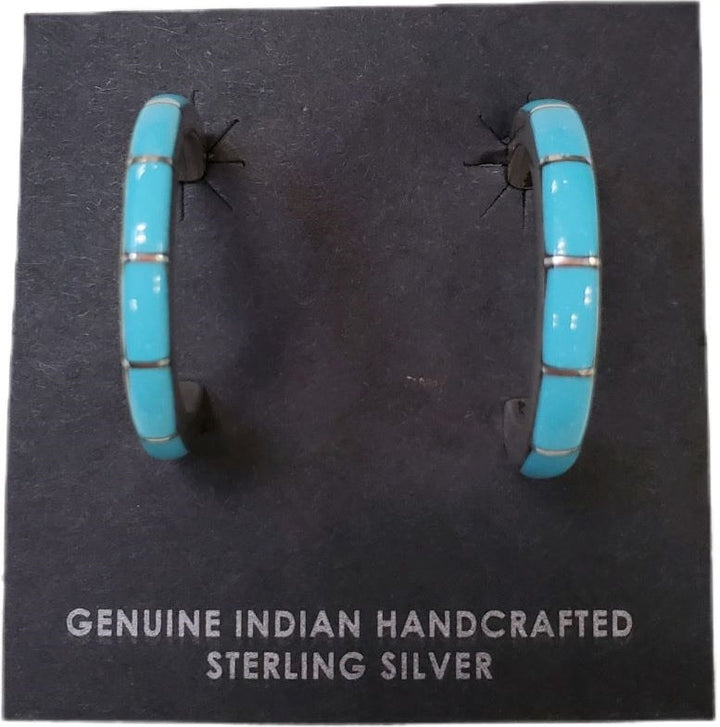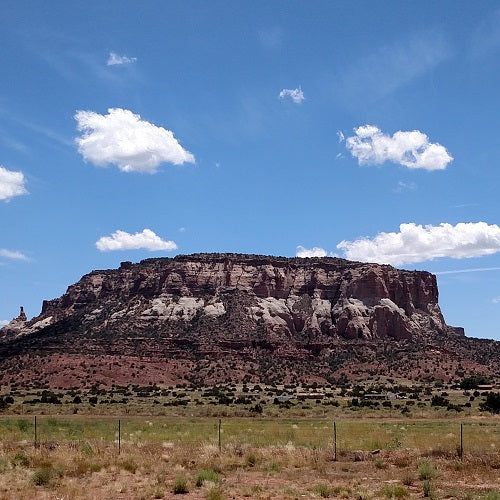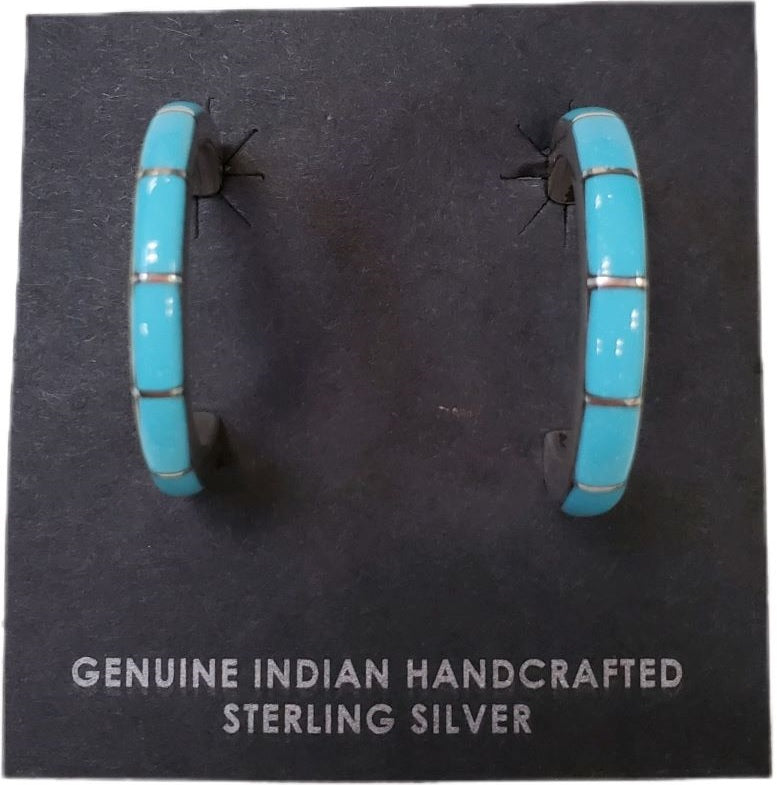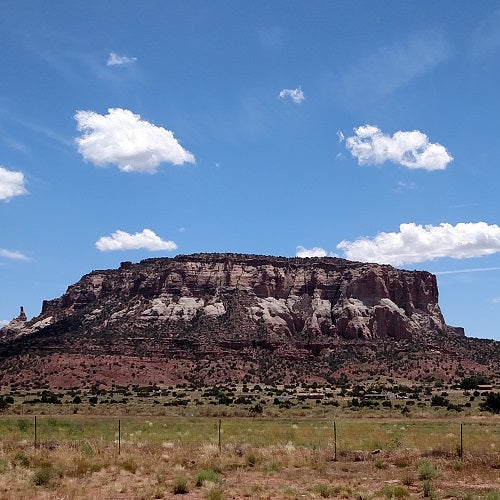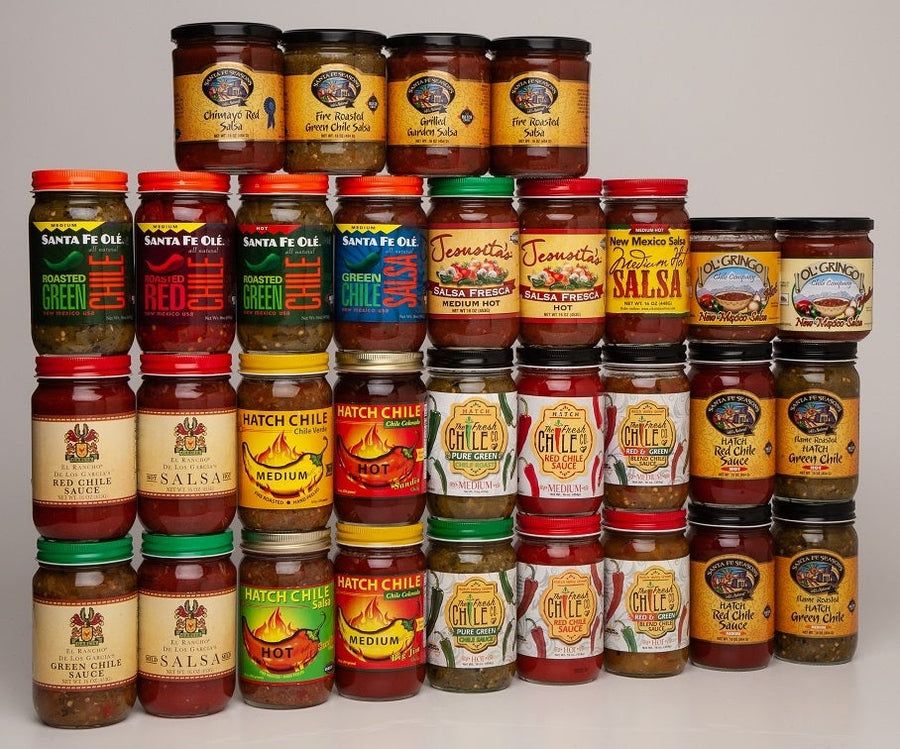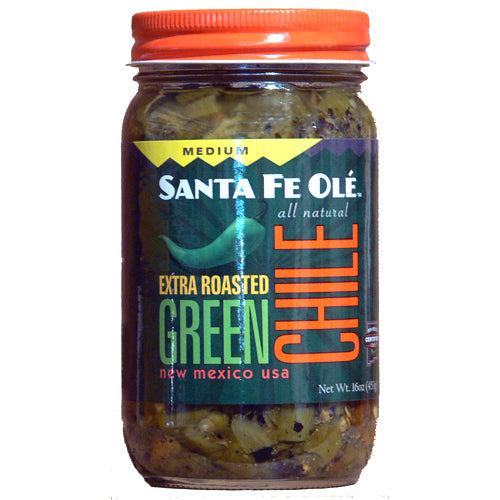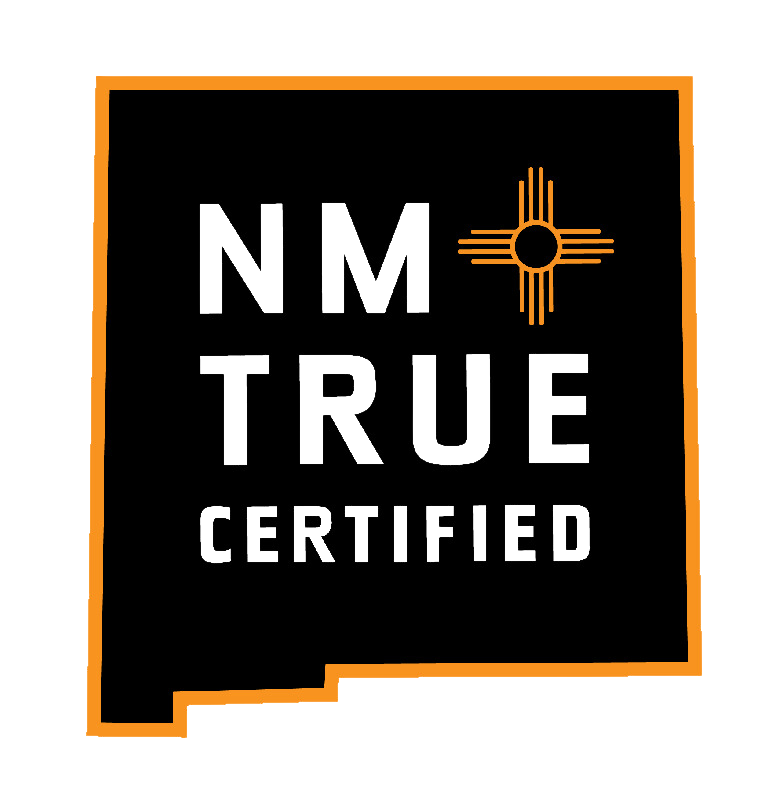The Zuni people have lived in the American Southwest for thousands of years. Their cultural and religious traditions are rooted, in large part, in the people's deep and close ties to the mountains, river ways, forests, and deserts of this ancient Zuni homeland. Primarily being farmers, the Zuni people raise maize and wheat and engage in Jewelry making. It has become an important additional source of income for the people. Traditional Zuni life is oriented around a matrilineal clan system and a complex ceremonial system base on a belief in the ancestors (ancient ones). There are six specialized esoteric groups, each with restricted membership and its own priesthood, devoted to the worship of a particular group of supernaturals. During the well-known Shalako Festival, held in early winter, dancers representing the couriers of the rain deities come to bless new homes. One way the Zuni people express these cultural traditions is through their art: in painting, pottery, jewelry, and fetish carving, for example. These things have significant meaning, and, to the Zuni, serve to help unite the past with the present. So, on the one hand, Zuni art is a material record of the past.
Elahkwa!
(Thank You)
We offer the discerning visitor many rich experiences that draw from our deep cultural heritage, our special history, our exquisite arts, and awesome scenic beauty. Zuni Pueblo is the largest of the nineteen New Mexican Pueblos, covering more than 700 square miles and with a population of over 10,000. We are considered the most traditional of all the New Mexico Pueblos, with a unique language, culture, and history that resulted in part from our geographic isolation. With perhaps 80% of our workforce involved in making arts, we are indeed an "artist colony." Our main "industry" is the production of arts, including inlay silverwork, stone “fetish” carving, pottery, and others of which we are world famous.
Most of Zuni's residents live in the main village of Zuni and the nearby "suburb" community of Blackrock. Zuni is a sovereign, self-governed nation with our own constitutional government, courts, police force, school system, and economic base. Our year is marked by a cycle of traditional ceremonial activities; the most sacred and perhaps the most recognized is the annual Sha'lak'o event.
Please be aware that there are restrictions in place for non-Zuni's wishing to witness our religious activities. We ask that visitors respect our cultural privacy by following the appropriate etiquette and guidelines. Our ceremonial activities are what make the Zuni people unique.
Elahkwa / Thank You for respecting our traditions.
The Zuni are one of the 19 Pueblo tribes of what is now known as New Mexico. The Zuni tribe lives along the Zuni River in the northwestern corner of the state on a reservation of roughly 450,000 acres. Archeologists believe Zuni history began well before 2500 B.C. when the tribe moved into the Southwest as big game hunters. Between 2500 B.C. and 700 A.D. the Zuni Indians made their first attempts at agriculture and hunted smaller game. Historians believe it was during this period they started making pottery and weaving baskets. By the 1500s, the tribe’s agriculture thrived thanks to their ingenious systems of irrigation that fueled their fields, allowing the Zuni to grow maize and wheat. The population grew and the tribe constructed plaza-style villages.
Outside forced first threatened the tribe in 1539. According to the official Zuni tribe website, Spaniard Fray Marco de Niza left Mexico with a man named Estevan and came across a Zuni village. When Estevan demanded turquoise and women, he was executed by the Zuni Indians. de Niza turned tail and retreated back to Mexico, but a year later, Spaniard Francisco Coronado returned to Zuni lands with a large army, hoping to exact revenge on de Niza’s behalf. The Spanish were driven out by the tribe and Coronado narrowly escaped with his life. It is believed six of Coronado’s men were left behind. Instead of executing the attackers, the Zuni allowed the men to live among them peacefully and they happily lived out their lives among the Zuni people.
Please Note: High volume and corporate orders may be subject to shipping charges, please reach out at 575-758-7709 for more information.
General Shipping Information
Are shipping rates are fixed relative to the amount spent, generally, and are listed below. They are some exceptions as the boxes get bigger or heavier. All the carriers charge more for bigger & heavier boxes. We are shipping with USPS Priority and UPS Ground. UPS is about 4 to 5 days, and USPS is 3- 5 days. We use Fed Ex for overnight shipping.
If one carrier is better for you to receive your order, please let us know.
Contact us at service@madeinnewmexico.com or at 505-469-2193.
- Standard Ground Shipping $0.00–$50.00 $9.75 USD
- Standard Ground Shipping $50.01–$100.00 $9.50 USD
- Standard Ground Shipping $100.01–$150.00 $9.25 USD
- Standard Ground Shipping $150.01–$199.99 $9.00 USD
- Standard Ground Shipping $200.00–$249.99 $8.75 USD
- Standard Ground Shipping $250.00 and up $25.00 USD
- USPS Priority Shipping (3-5 Days) $0.00–$200.00 $23.50 USD
FedEx Next Day Shipping
-
Whether you are shipping to a customer or to family, near or far, there are times when it just needs to be there overnight. Choose next-business-day delivery. Take advantage of a variety of options with FedEx Priority Overnight and FedEx Standard Overnight. The order has to be into us before 10 am to be delivered the next day. Anything after that will not be delivered for 2 days. Ordering at 10 pm at night the order will not get there the next day & we will not refund the shipping. Overnight orders received after 10 am on a Friday will not go out until Monday.
- Delivery by 2:30 p.m. the next business day to most areas; by noon, 4:30 p.m. or 5 p.m. to remote areas. Available throughout all 50 states. Saturday pickup and delivery available in many areas for an additional charge.
Shipping to Military Addresses
- We ship to Military APO (Army Post Office) and FPO (Naval Fleet Post Office) addresses. All APO/FPO packages will be shipped by USPS Priority Mail. When shipping to APO/FPO addresses: USA is the country; the recipient's unit number is the address; APO or FPO is the city; AA, AP or AE is the state; and the zip code is entered just like a standard domestic zip code. Please test the address on the National Address Server and use all 9 digits of the zip code, if given. If you need more information on how to ship to APOs/FPOs, please visit this Post Office Page The Military Post Office System has a hotline for questions about shipping to APOs/FPOs: 1-800-810-6098.
Shipping to Canada
-
Please note: We do ship to Canada, but there may be additional taxes/duties charged that the recipient will be responsible for paying. This may also include delayed delivery and require that the recipient retrieve the item from a customs office.
How do I contact you?
Most questions can be answered simply by reviewing the information in our FAQ details. However, if you don't find the answer to your question there, visit this page: Contact Us. Nobody responds faster!
Can I Get a Catalog in the Mail?
Sorry, but we're too small to be able to publish a mail order catalog, and we are adding new Local New Mexico products all the time. If we did send out a catalog it would be out of date in a few weeks. We do offer an email newsletter that will tell you about our latest specials and new products.
I'm Nervous About Ordering Online. Can I Order by Phone?
Sure you can call us!! Contact Us here.
There Is A Product I Want, But I Don't See It Online. How Can I Get It?
Most everything we sell is listed right here on our website. If you don't see it, give us a call and we will do our best to find it for you, or you may have seen it at our Taos Store location, visit this page: Contact Us. Nobody responds faster!
I Just Checked My Online Banking Account, And It Appears You've Charged My Credit Card Twice!
Mistakes happen, but we will do our best to get this fixed as soon as possible. Please visit this page: Contact Us. Nobody responds faster!
What Payment Methods Do You Accept?
We accept VISA, Mastercard, American Express, Discover..
I Have A Coupon. How Do I Redeem It?
There is a box on the Shopping Cart Page a little down and to the left on that page that says "Coupon Code". Enter your code in that box and then press the "apply" button and the discount will be applied to your order.
Do You Offer Gift Wrapping?
Yes! Please see our gift-wrapping page for details.
What Is Your Return Policy?
We accept returns for pretty much any reason at any time, but we only accept those returns we have been notified to expect. See our return policy page for details.
What Shipping Methods Do You Offer?
We ship by UPS, and the United States Postal Service. Please see our shipping terms page for all the details.
When Will My Order Ship?
99% of orders ship within one business day: Order by 11am Mountain time and it will ship the same day!
Do You Ship Overseas?
No, we currently only ship within the US, US Territories, APO addresses and Canada
How Do I Track My Order?
When your order ships you will receive a confirmation email which contains your tracking number and a link to either Fed Ex or USPS.
Where Is Your Store Located?
We're a REAL retail store, not just a "virtual" one. Our Made in New Mexico store is located on the west side of the famous Taos Plaza. The address is 127 N. Plaza, Taos, NM 87571.
Do You Sell Wholesale?
No we're a retail store and website.
How Do I Contact The Manufacturer Of A Product I Saw On Your Site?
We do not give out this information but will be happy to contact them on your behalf.
What Is Your Privacy Policy?
You can read it on our privacy page
Officially Certified
NEW MEXICO TRUE
Made in New Mexico® products epitomize authenticity, capturing the essence and rich cultural heritage of the region. When you shop at the official Made in New Mexico® store, you are guaranteed to receive products that are 100% authentic and crafted with the highest standards of quality. Whether you're shopping online or placing your order by phone, the store offers a seamless experience with fast shipping from New Mexico to Taos, ensuring that your orders arrive promptly. For orders over $200, customers can enjoy the added benefit of free delivery. The Made in New Mexico® store is not just about fast and free shipping; it's about bringing a taste of New Mexico into your home. With a wide array of products including sauces and salsas, each item is a testament to the unique flavors and traditions of New Mexico. Plus, with special promotions like taking 10% off with a code, shopping for authentic New Mexican products has never been more appealing.
